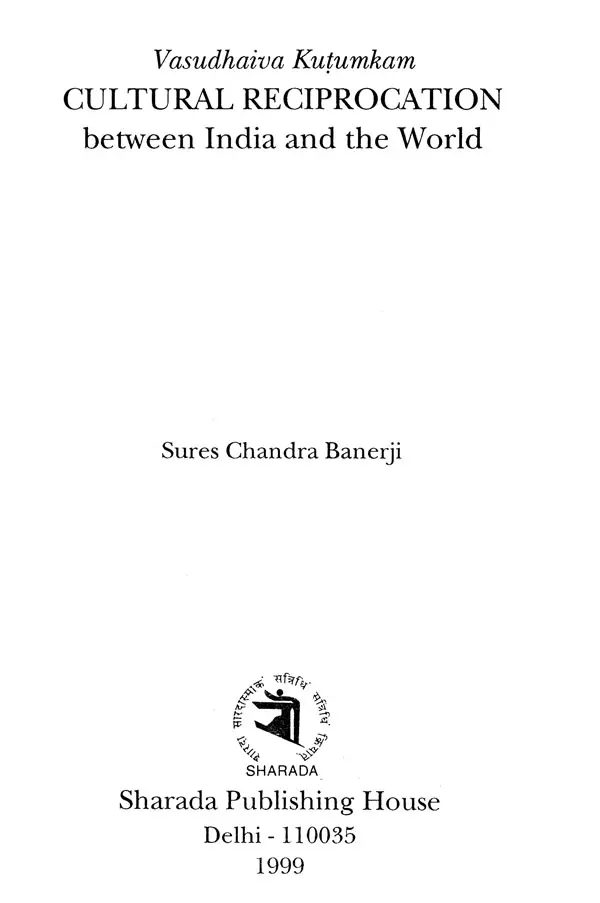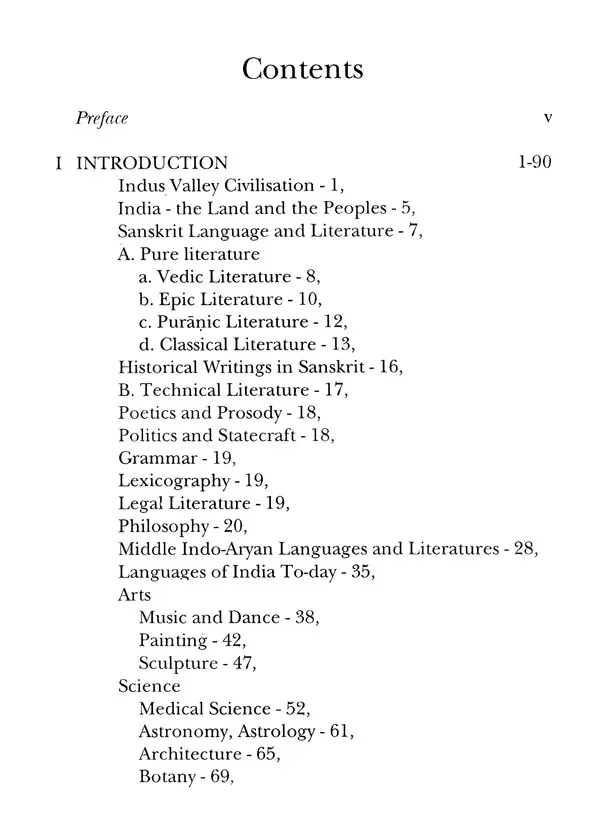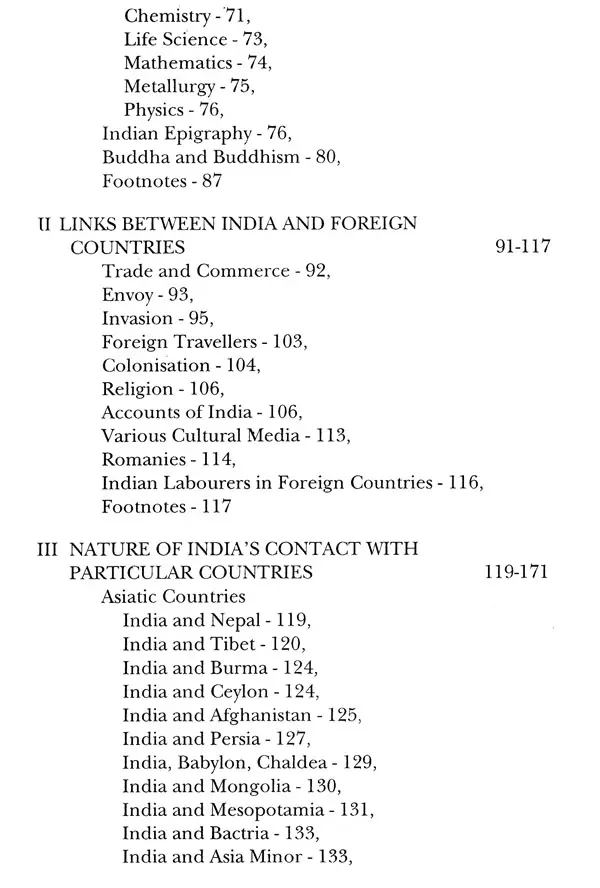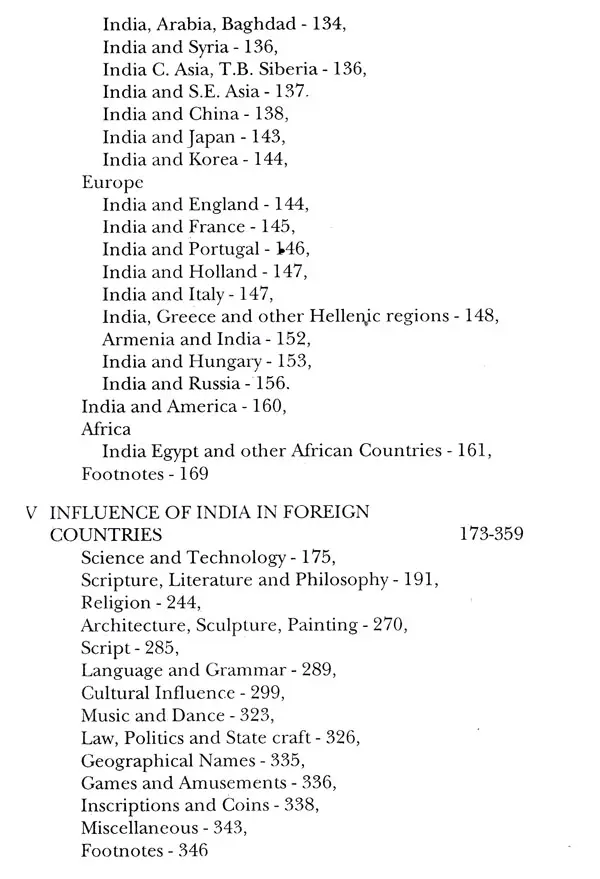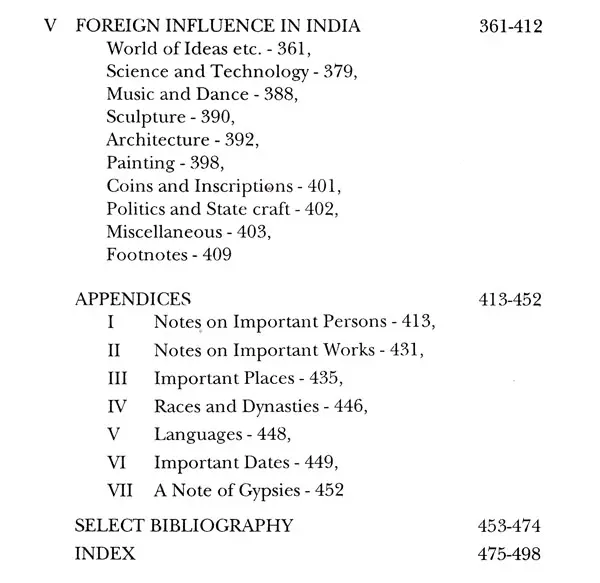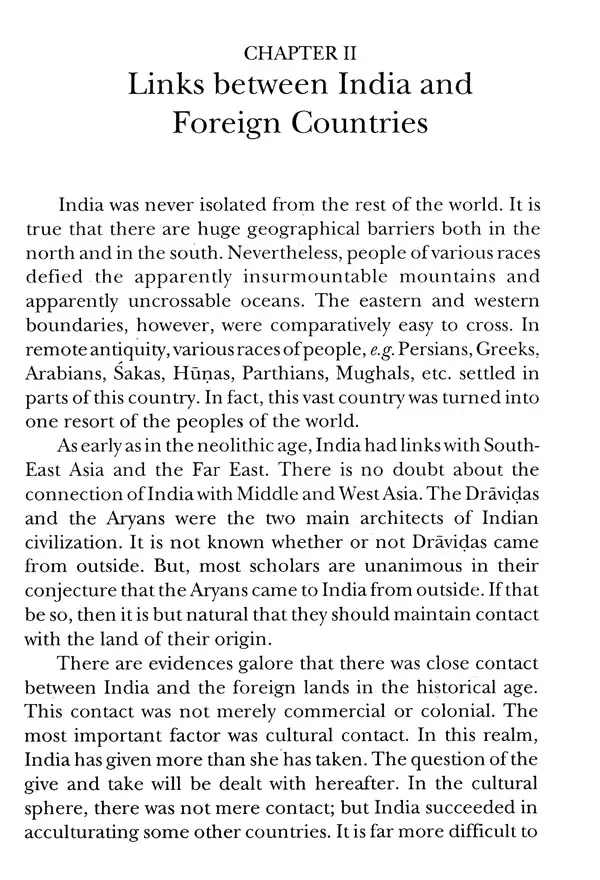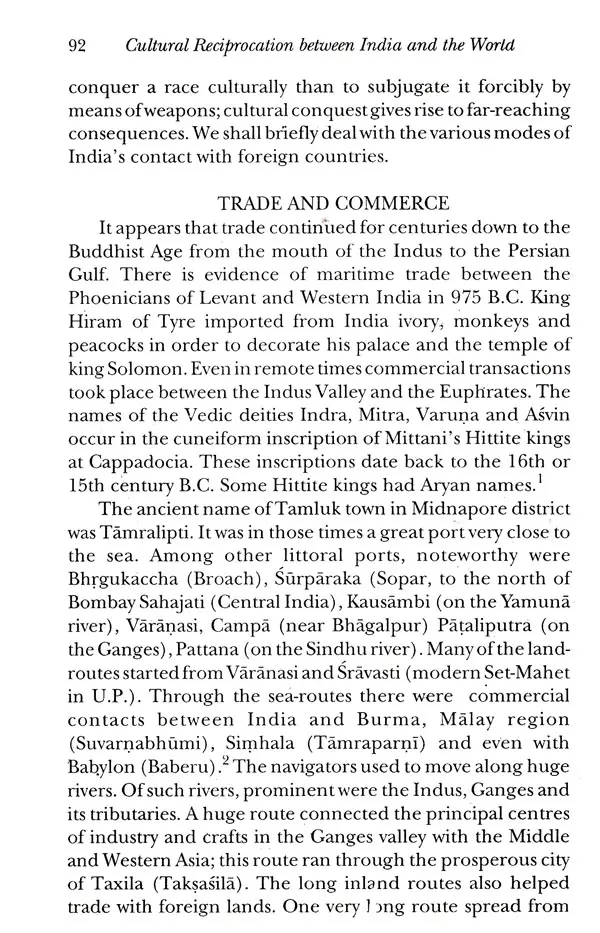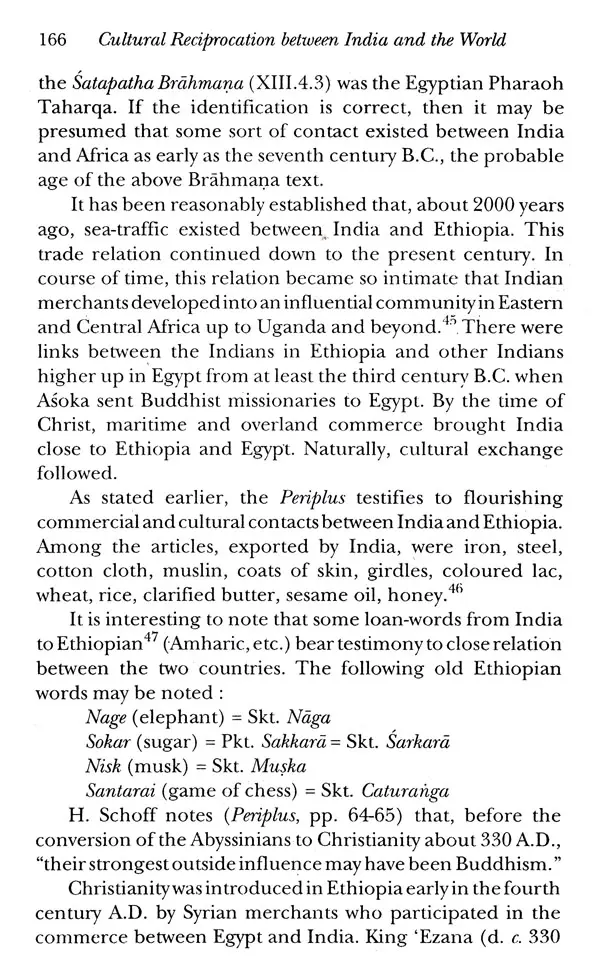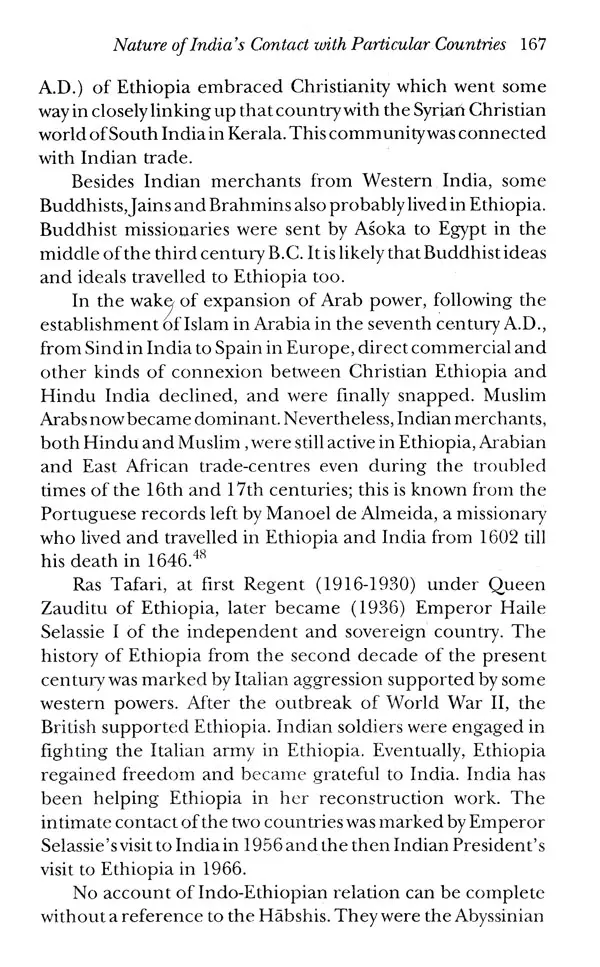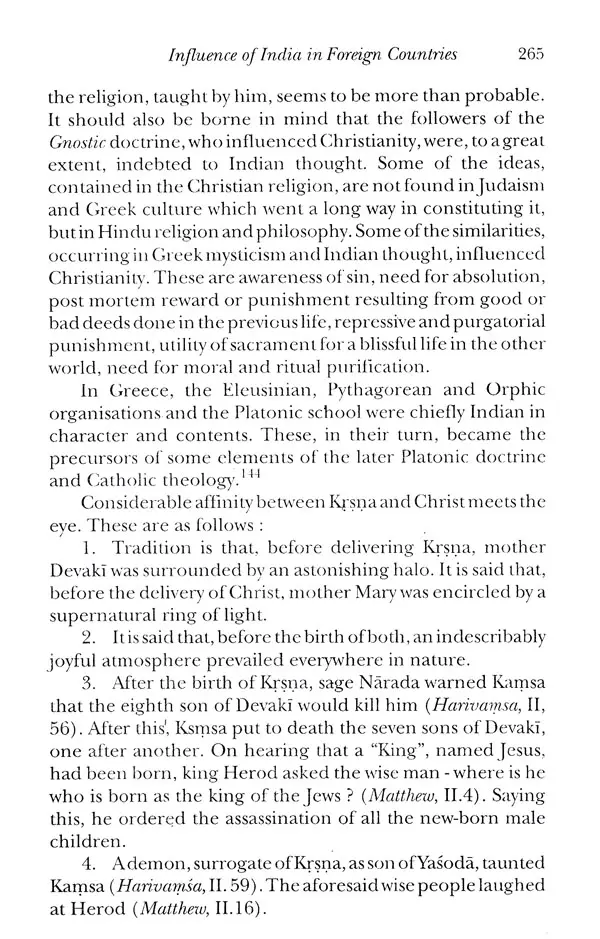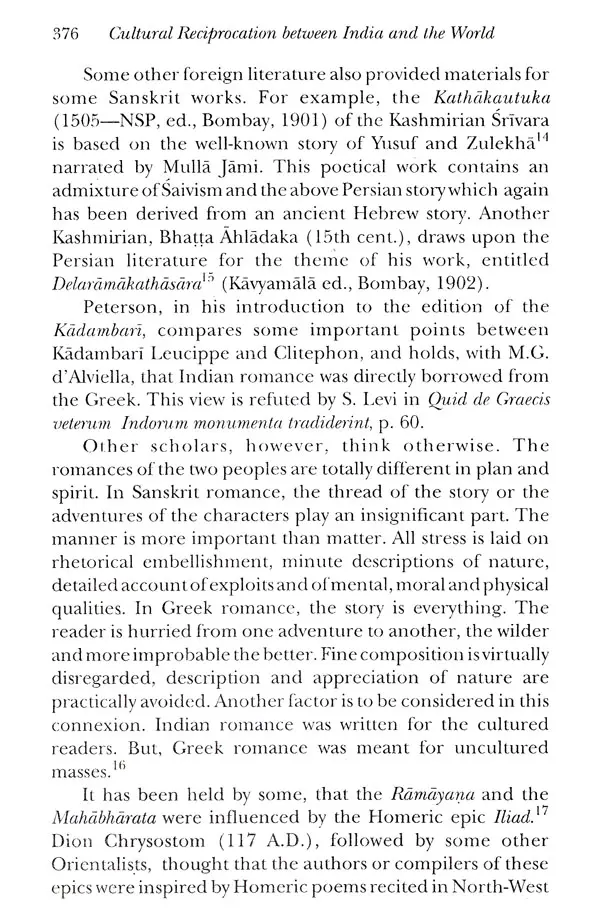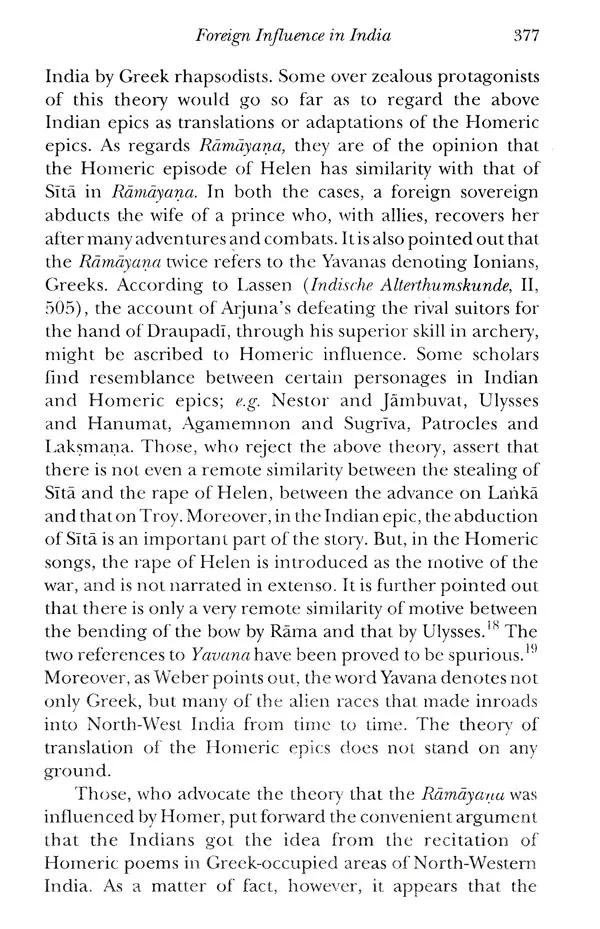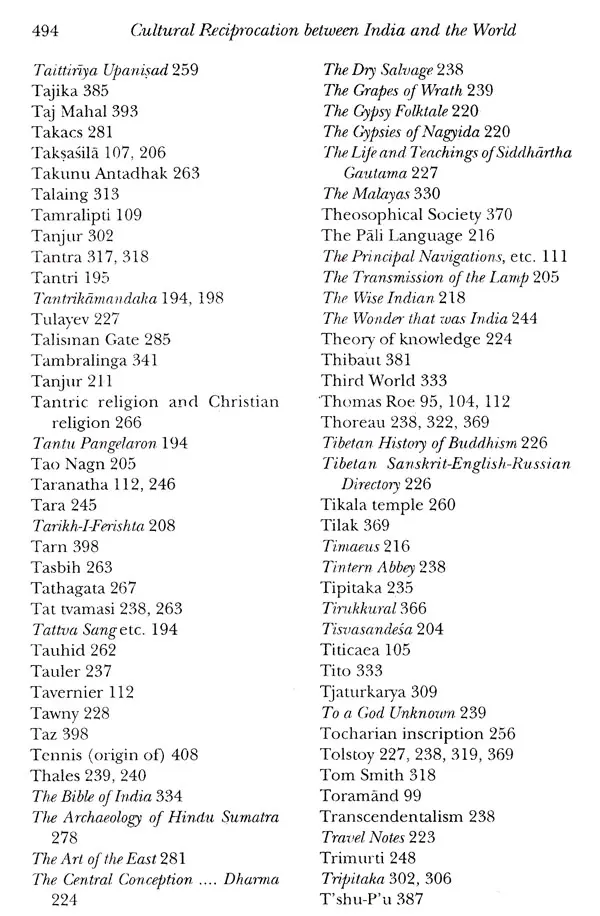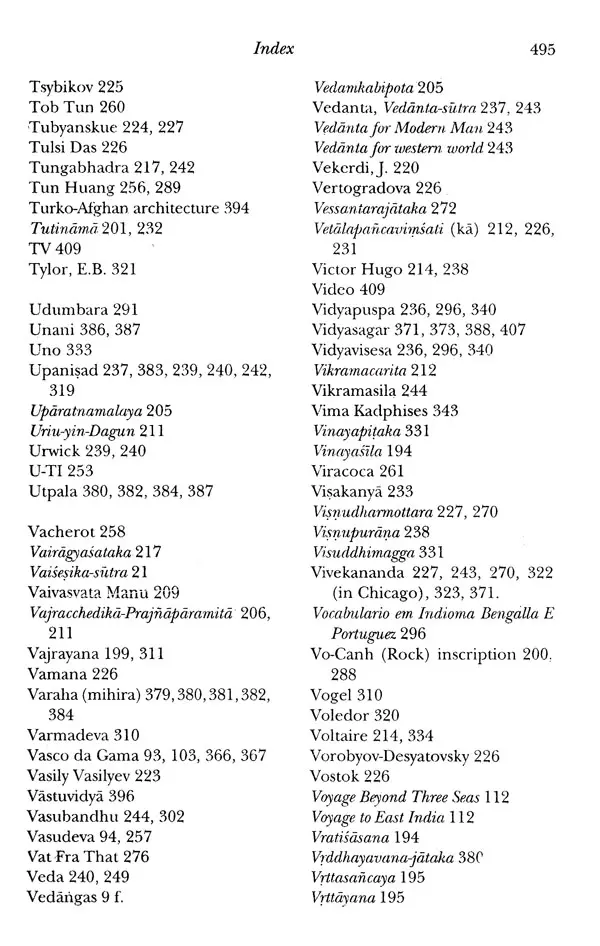
Vasudhaiva Kutumbakam : Cultural Reciprocation Between India & The World
Book Specification
| Item Code: | UAF647 |
| Author: | Suresh Chandra Banerji |
| Publisher: | Sharada Publishing House, Delhi |
| Language: | English |
| Edition: | 1999 |
| ISBN: | 8185616590 |
| Pages: | 502 |
| Cover: | HARDCOVER |
| Other Details | 9.00 X 6.00 inch |
| Weight | 740 gm |
Book Description
The book is designed to find out the foundations on which the global cultural edifice has been built. A perusal of the book will convince the reader that the world civilisation is like a mighty old tree that ramified through centuries. In different facets of culture, architecture, sculpture, music, astronomy, mathematics, medical science, literature, etc. India played the roles of both the lender and the borrower. The readers will feel that the homo sapiens belong to one big family which is oblivious of its common heritage.
S. C. Banerji (1917-),a retired Professor of Sanskrit, a Fellow of Asiatic Society, Calcutta and recognised by International Biographical Centre, Cambridge, England, as International Man of the Year 1997/98, is a dedicated indologist. He has, to his credit, about sixty books, on different aspects of indology, in English, Bengali and Hindi. Among his English works are A Companion to Sanskrit Literature, A Brief History of Tantra Literature, Studies in the Origin and Development of Yoga, A Companion to Indian Philosophy, New Perspectives in the study of the Puranas, A Brief History of Dharmaśāstra, Historical Survey of Ancient Indian Grammars (Sanskrit, Pali and Prakrit), Principles of Hindu Jurisprudence (2 Vols.), Studies in the Mahāpurāṇas, etc.
Thanks to the advancement of science and the invention of quick transport and the media of communication, viz. Television and Radio, the different countries of the world, no matter however great the distance between them may be, have come close to one another. The urge for education has resulted in the seekers of knowledge, general, technical and scientific, going abroad - this is also responsible for intimate contacts among different countries.
Yatra višvam bhavatyekanidam (where the world becomes one nest)-this motto of Rabindranatha's Visvabhārati provided the first inspiration to the author for an assessment of the affinities of the Indians with the foreigners in the different spheres of life.
Impelled by a strong desire to study the relation of India with different parts of the globe since prehistoric times, the author took up the present study. In assessing the influence exercised by India and on her, we have tried to be as objective as possible. In selecting the sources and materials, we have taken into account up-to-date research as far as possible.
The plan of the work is briefly this. In the introduction, we have tried to give an outline of Indian literature and culture. This is followed by a general description of the different ways in which contact was established between India and different parts of the world. In the next chapter, the specific modes of India's contact with the particular foreign countries have been dealt with. In the chapter that follows, we have given an account of India's influence abroad in various spheres of intellectual, cultural and religious life. The concluding chapter contains a description of the multifaceted foreign influence on India.
In course of our study, we have referred to a host of places, persons, works, races, dynasties and languages. For ready reference, we have added an appendix each on the above items. For enabling the reader to have a clear historical perspective, we have, at the outset, given a list of the important personages and events mentioned in the work. At the end, we have given as exhaustive a bibliography as possible. It sets forth not only the titles of important books but also the names of noteworthy papers published in various journals, Indian and foreign. In a work like this, the use of the earlier works is indispensable. We have duly acknowledged the help derived from various works.
In conclusion, it is my pleasant duty to acknowledge the unstinted help rendered by my near and dear ones. Of them, my wife, ungrudgingly shouldering the responsibilities of the day-to-day household work, provided the opportunity to devote all my energy to my intellectual pursuits. She helped me with intelligent suggestions. My two daughters, Dr. Chanda Chakrabarti and Sarmilä Chatterji, were at my beck and call for all kinds of work relating to the procurement of books and the supplying of the articles for day-to-day use. In this connexion, my sons-in-law, Dr. Dipak Chakrabarty and Dr. Tushar Chattopadhyay, deserve grateful mention.
Before assessing Indian influence abroad, we should have an idea of Indian culture and society through the ages. It is not possible to deal elaborately, in a work like this, with the multifaceted Indian civilisation spanning a period of roughly five thousand years. All that we can do is to touch briefly upon the different aspects.
INDUS VALLEY CIVILISATION
Archaeological explorations have revealed the ruins of an ancient Indian civilisation mainly at Mohenjo-daro in Larkana district of Sind in Pakistan, and at Harappa in south west Punjab (Pakistan). The highlights of this urban civilisation, believed to be about 5,000 years old, are as follows. It is supposed to have existed nearly 3,000 years before Christ.
The entire area is divided into several sections by roads. Each section comprises several big brick-built mansions each of which contains small rooms. On the highway, below the mansions are shops. There are courtyards in some houses. Occasionally two-storied buildings also are seen.
The public bath, 180' x108', enclosed by a wall 7-8 ft. thick, contains a swimming pool 39 x 23' and 8' in depth, which is surrounded by a row of polished bricks plastered with bitumen one inch thick.
The granary at Mohenjo-daro is 150' x 75' and 25' high (the one in Harappa is smaller). The fort, meant for defence, is close to the granary and bath.
An examination of the skeletons and skulls reveals that the area was inhabited by the people of the following races-Caucasian, Mediterranean, Alpain and Mongolian. It is, however, not known who the architects of this civilisation were. Some scholars think, not on positive evidence, that some foreigners, who came by sea-route, built up this civilisation. Others are of the opinion that it was indigenous, and was ruined by the onslaught of the Aryans.
Among the foodstuffs of the people were barley, wheat, sesame, peas, oilseeds, etc. and the meat of the sheep, boar, fowl and tortoise, etc., sea-snails and dried fish.
Their garments consisted in cloths and shawls made of cotton. The articles for household work were utensils made of copper, bronze, stone and clay. Among the implements for daily use were knife, stone-axe, ploughshare, ornament-box; colour-containers also appear to have been used. Weights and measures indicating different quantities and soft-stone. seals inscribed with letters tend to hint at the practice of reading and writing. The Indus Valley script has not yet been deciphered. It has, however, been surmised that writings have to be read from the right to the left.
Ornaments appear to have been made of gold, silver, conch-shell, precious stones, bones and ivory. Mirror, razor, fishing hook, needle, etc. were made of copper and bronze. Earthen dolls, marbles, etc. were playthings for children and dice-men (like those for playing chess), etc. were for adults. Specimens of sculpture are seen in the bronze figure of a female dancer and stone image of a Yogin.
